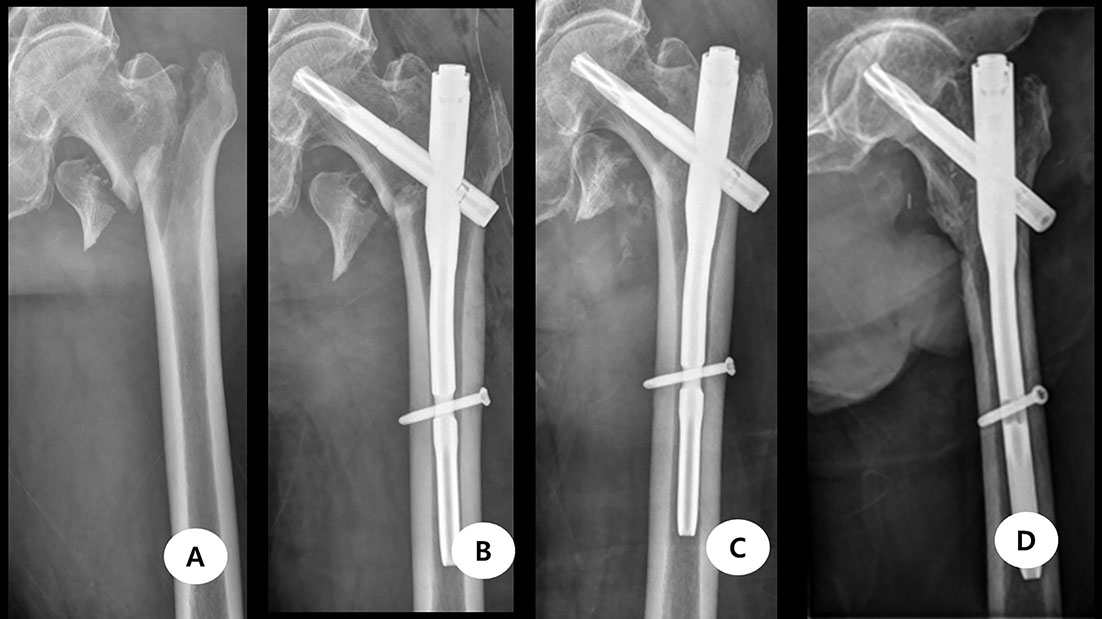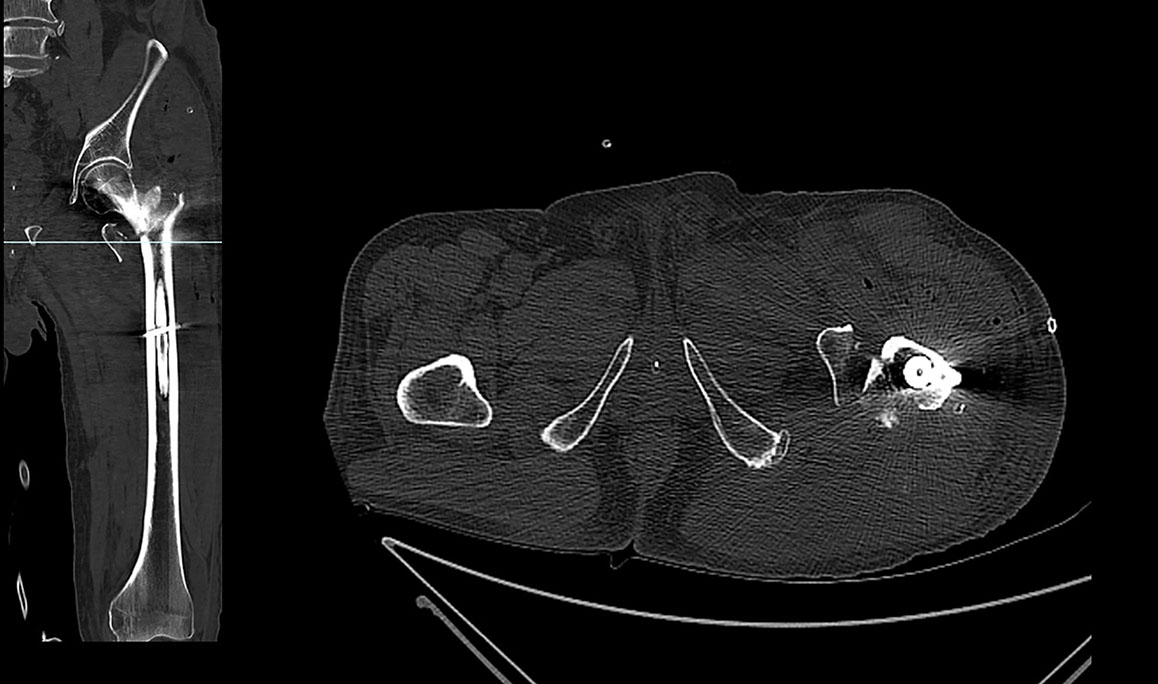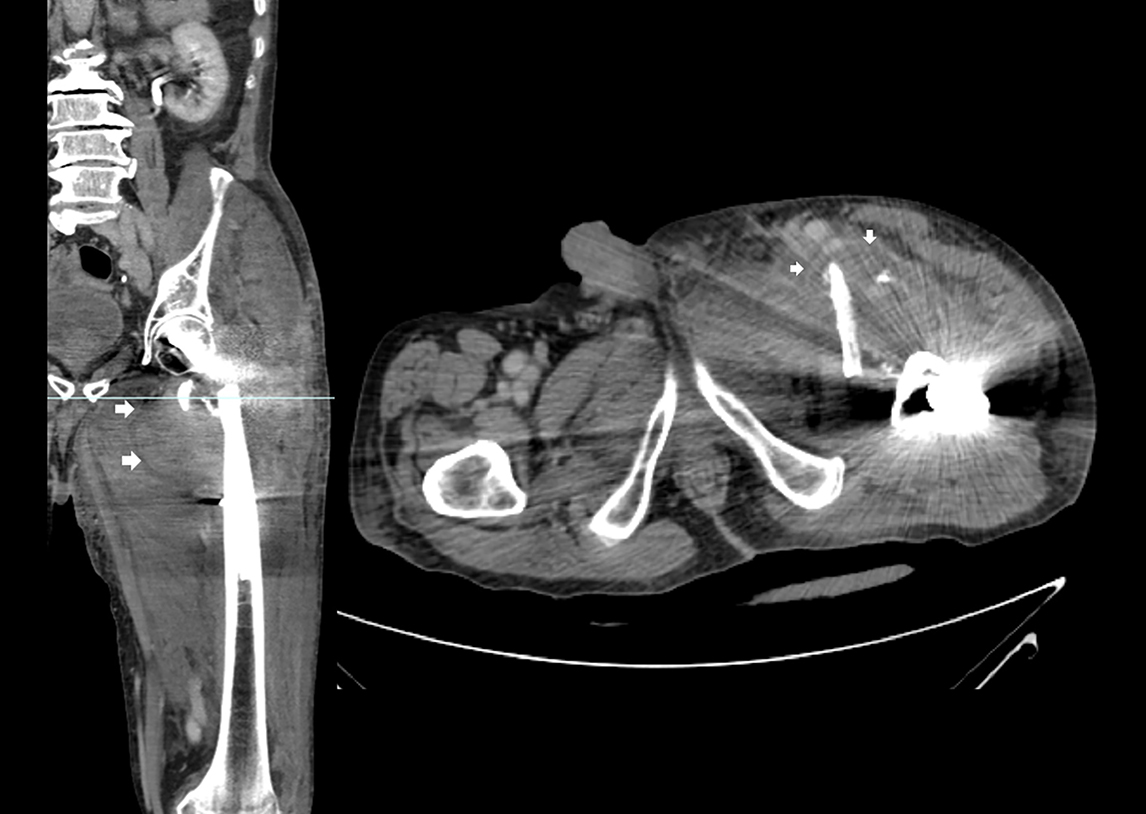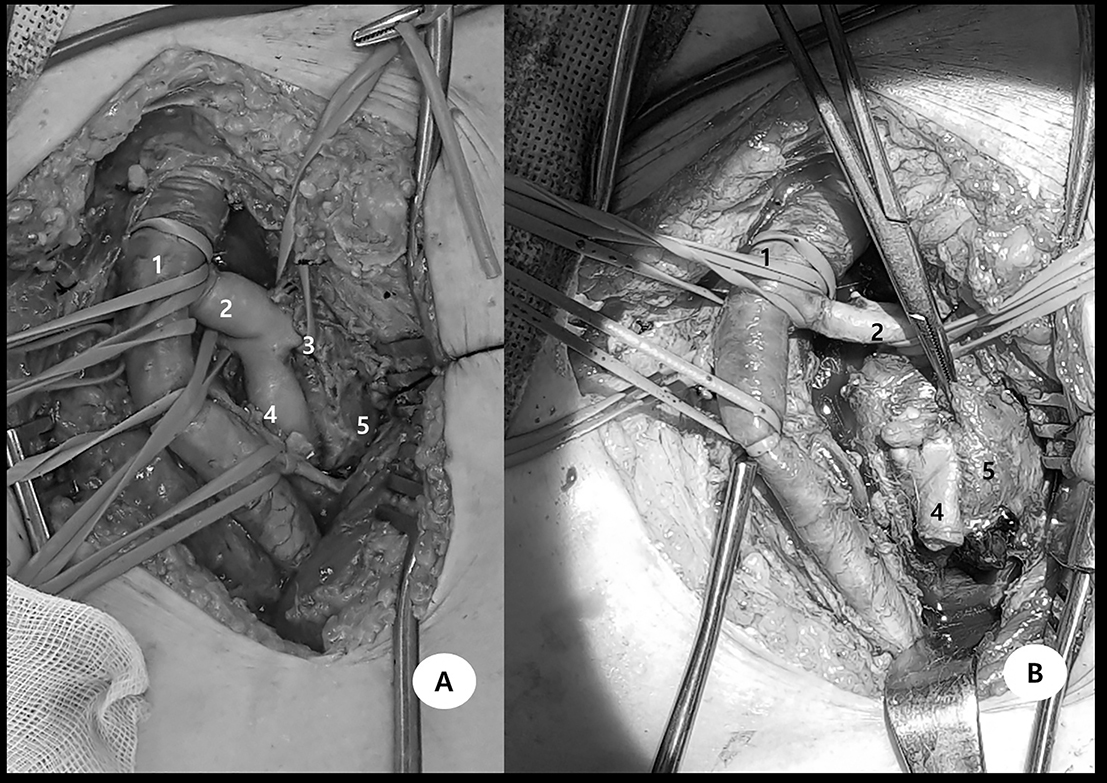Articles
- Page Path
- HOME > J Musculoskelet Trauma > Volume 34(2); 2021 > Article
- Case Report Delayed Pseudoaneurysm of Deep Femoral Artery Caused by Migration of Lesser Trochanter, Subsequent to an Intertrochanteric Fracture Surgery - A Case Report -
- Bum-Soo Kim, Seong-Tae Kim, Seungyup Shin, Chang Geun Yu
-
Journal of Musculoskeletal Trauma 2021;34(2):76-79.
DOI: https://doi.org/10.12671/jkfs.2021.34.2.76
Published online: April 30, 2021

- 374 Views
- 4 Download
- 0 Crossref
- 0 Scopus
Abstract
The lesser trochanteric fracture is commonly found amongst intertrochanteric fractures, where pseudoaneurysm of the femoral artery is a rare complication. A pseudoaneurysm could develop due to the penetration injury of the artery by the bone fragment during occurrence of the fracture, or by the insertion of screws during the surgical procedure. Minimal complication is seen when the lesser trochanter is not fixed during the intertrochanteric fracture surgery. However, in the current case, the authors experienced appearance of a delayed pseudoaneurysm of the deep femoral artery caused by migration of the lesser trochanter, which was successfully treated by excision.
Published online Apr 23, 2021.
https://doi.org/10.12671/jkfs.2021.34.2.76
Delayed Pseudoaneurysm of Deep Femoral Artery Caused by Migration of Lesser Trochanter, Subsequent to an Intertrochanteric Fracture Surgery: A Case Report
Abstract
The lesser trochanteric fracture is commonly found amongst intertrochanteric fractures, where pseudoaneurysm of the femoral artery is a rare complication. A pseudoaneurysm could develop due to the penetration injury of the artery by the bone fragment during occurrence of the fracture, or by the insertion of screws during the surgical procedure. Minimal complication is seen when the lesser trochanter is not fixed during the intertrochanteric fracture surgery. However, in the current case, the uthors experienced appearance of a delayed pseudoaneurysm of the deep femoral artery caused by migration of the lesser trochanter, which was successfully treated by excision.
Fig. 1
(A) The fracture type was AO/OTA 31 A1.3. (B) Intramedullary fixation was performed. (C) The lesser trochater fragment migrated proximally. (D) Lesser trochnter excision was performed.
Fig. 2
The computed tomography taken 3 days postoperatively. Around the lesser trochaner there was neither hematoma nor pseudoaneurysm.
Fig. 3
Left lower extremity swelling was observed.
Fig. 4
On the computed tomography, there was pseudoaneurysm which was formed by the penetrating injury of the artery by the lesser trochanter bone fragment. White arrows indicate pseudoaneurysm.
Fig. 5
(A) Through exploration pseudoaneurysm was found. (B) Descending branch of the deep fomoral artery was excised to remove pseudoaneurysm. 1: femoral artery, 2: deep femoral artery, 3: lateral circumflex femoral artery, 4: descending branch, 5: pseudoaneurysm.
Fig. 6
The patient can flex the knee against resistance.
Financial support:None.
Conflict of interests:None.

 E-submission
E-submission KOTA
KOTA








 Cite
Cite

